
Racial segregation is the separation of people into racial or other ethnic groups in daily life. Segregation can involve the spatial separation of the races, and mandatory use of different institutions, such as schools and hospitals by people of different races. Specifically, it may be applied to activities such as eating in restaurants, drinking from water fountains, using public toilets, attending schools, going to films, riding buses, renting or purchasing homes or renting hotel rooms. In addition, segregation often allows close contact between members of different racial or ethnic groups in hierarchical situations, such as allowing a person of one race to work as a servant for a member of another race. Racial segregation has generally been outlawed worldwide.
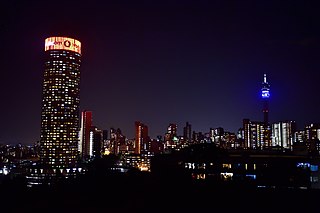
Johannesburg is the most populous city in South Africa with 4,803,262 people, and is classified as a megacity; it is one of the 100 largest urban areas in the world. It is the provincial capital and largest city of Gauteng, which is the wealthiest province in South Africa. Johannesburg is the seat of the Constitutional Court, the highest court in South Africa. Most of the major South African companies and banks have their head offices in Johannesburg. The city is located within the mineral-rich Witwatersrand hills, the epicentre of the international-scale mineral, gold and (specifically) diamond trade.

A Bantustan was a territory that the National Party administration of South Africa set aside for black inhabitants of South Africa and South West Africa, as part of its policy of apartheid.
The term "minority group" has different usages, depending on the context. According to its common usage, the term minority group can simply be understood in terms of demographic sizes within a population: i.e. a group in society with the least number of individuals, or less than half, is a "minority’. Usually a minority group is disempowered relative to the majority, and that characteristic lends itself to different applications of the term minority.
Geographical segregation exists whenever the proportions of population rates of two or more populations are not homogeneous throughout a defined space. Populations can be considered any plant or animal species, human genders, followers of a certain religion, people of different nationalities, ethnic groups, etc.
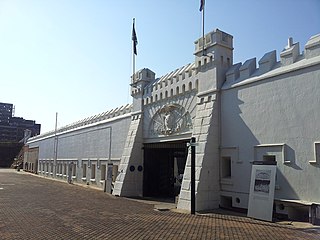
The Constitution Hill precinct is located at 11 Kotze Street in Braamfontein, Johannesburg near the western end of the suburb of Hillbrow. Constitution Hill is the seat of the Constitutional Court of South Africa.
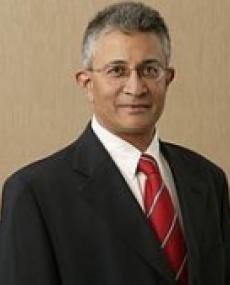
Valli Moosa is Deputy Chairperson of the Presidential Climate Commission and Chairperson of the Constitution Hill trust. He was born in Johannesburg and is a veteran of the South African freedom struggle. Valli worked closely with Nelson Mandela during the settlement talks, served as negotiator for the ANC, and participated in drafting the South African Constitution. He served in President Mandela’s cabinet as Minister of Constitutional Development, and in President Mbeki’s government as Environment Minister. Valli joined the corporate sector in 2004 and currently serves on the board of Sappi Ltd. He has previously served on the boards of Anglo Platinum, Eskom and Sanlam. Valli served as a facilitator in the global climate change negotiations for a number of years. He previously served as President of the International Union for the Conservation of Nature (IUCN), as Chairman of the UN Commission on Sustainable Development and as Chairman of WWF(SA).

Apartheid was a system of institutionalised racial segregation that existed in South Africa and South West Africa from 1948 to the early 1990s. Apartheid was characterised by an authoritarian political culture based on baasskap, which ensured that South Africa was dominated politically, socially, and economically by the nation's minority white population. In this minoritarian system, there was social stratification, where white citizens had the highest status, followed by Indians and Coloureds, then Black Africans. The economic legacy and social effects of apartheid continue to the present day, particularly inequality.
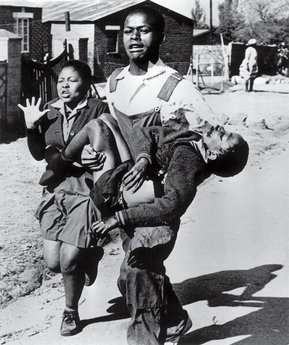
The Soweto uprising was a series of demonstrations and protests led by black school children in South Africa during apartheid that began on the morning of 16 June 1976.

Facilities and services such as housing, healthcare, education, employment, and transportation have been systematically separated in the United States on racial categorizations. Segregation was the legally or socially enforced separation of African Americans from whites, as well as the separation of other ethnic minorities from majority and mainstream communities. While mainly referring to the physical separation and provision of separate facilities, it can also refer to other manifestations such as prohibitions against interracial marriage, and the separation of roles within an institution. The U.S. Armed Forces up until 1948, black units were typically separated from white units but were still led by white officers.
The National Union of South African Students (NUSAS) was an important force for liberalism and later radicalism in South African student anti-apartheid politics. Its mottos included non-racialism and non-sexism.
The system of racial segregation and oppression in South Africa known as apartheid was implemented and enforced by many acts and other laws. This legislation served to institutionalize racial discrimination and the dominance by white people over people of other races. While the bulk of this legislation was enacted after the election of the National Party government in 1948, it was preceded by discriminatory legislation enacted under earlier British and Afrikaner governments. Apartheid is distinguished from segregation in other countries by the systematic way in which it was formalized in law.
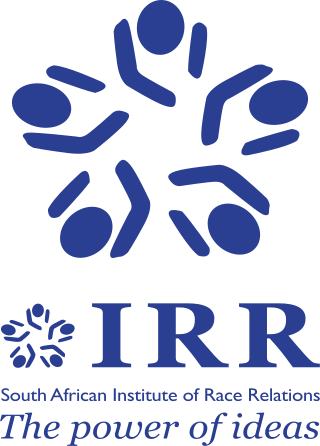
The South African Institute of Race Relations (IRR) is a research and policy organisation in South Africa. The IRR was founded in 1929 to improve and report upon race relations in South Africa between the politically dominant white group and the black, coloured, and Indian populations, making the Institute "one of the oldest liberal institutions in the country".
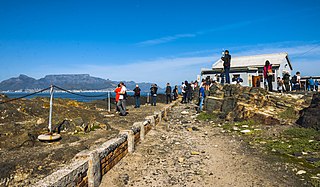
South Africa is a tourist destination with the tourist industry accounting for 2.34% of GDP in 2019 followed by a sharp drop in 2020 to 0.81% of GDP due to lack of travel caused by the COVID-19 pandemic. The official marketing agency for the country South African Tourism is responsible for marketing South Africa to the world. According to the World Travel & Tourism Council, the tourism industry directly contributed ZAR 102 billion to South African GDP in 2012, and supports 10.3% of jobs in the country. The official national marketing agency of the South African government, with the goal of promoting tourism in South Africa both locally and globally is known as South African Tourism.

Internal resistance to apartheid in South Africa originated from several independent sectors of South African society and took forms ranging from social movements and passive resistance to guerrilla warfare. Mass action against the ruling National Party (NP) government, coupled with South Africa's growing international isolation and economic sanctions, were instrumental in leading to negotiations to end apartheid, which began formally in 1990 and ended with South Africa's first multiracial elections under a universal franchise in 1994.
Kleinfontein is a culturally segregated, Afrikaner-only settlement near Pretoria, South Africa that was founded in 1992. Members of the African National Congress and Democratic Alliance youth have denounced the settlement and the continued existence of Afrikaner-only settlements in post-Apartheid South Africa.

The Cape Town Holocaust & Genocide Centre began as Africa's first Holocaust centre founded in 1999. It has sister Centres in Johannesburg and Durban, and together they form part of the association, the South African Holocaust & Genocide Foundation (SAHGF). The SAHGF determines the educational and philosophical direction of the centre. It also conducts teacher training and is the only accredited service-provider for in-service training in Holocaust education in the country. It has trained over 5,000 teachers
Jane Alexander is one of the most celebrated artists in South Africa. She is a female artist best known for her sculpture, The Butcher Boys. She works in sculpture, photomontages, photography and video. Alexander is interested in human behavior, conflicts in history, cultural memories of abuse and the lack of global interference during apartheid. Alexander's work is relevant both in the current Post- Apartheid social environment in South Africa and abroad.
Claudette Schreuders is a South African sculptor and painter operating out of Cape Town, South Africa. She is known mainly for her carved and painted wooden figures, which have been exhibited independently and internationally in galleries and museums. She is the first South African artist to have a sculpture acquired by the Metropolitan Museum of Art. Schreuders has been a finalist for both the Daimler Chrysler Award and the FNB Vita Art Prize, which is South Africa's version of the Turner Prize.
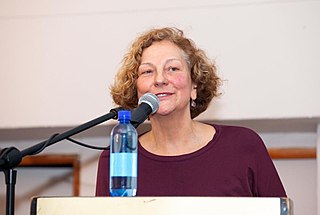
Melissa Steyn is a South African academic based at the University of the Witwatersrand, Johannesburg. Prior to moving to Johannesburg in 2011, she taught at the University of Cape Town.





















